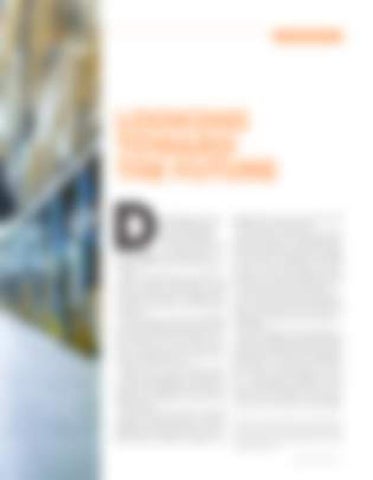WAREHOUSING
LOOKING TOWARD THE FUTURE
D
aniel Faintuch, vice president of Marketing and Sales for BionicHive, talks with B-Tank about his company, which is due to release Squid, an autonomous fleet of robots designed for the warehousing market in 2019. Squid offers flexibility and scalability to existing warehouse infrastructure. It will increase productivity while offering significant labor-cost savings, as warehouses will no longer require workers to load and unload their stock. “Newer solutions are much more affordable than conventional automation from 10 or 20 years ago,” says Faintuch. “The older automation took four to seven years before a warehouse could expect a return on their investment; our company promises a return on your money in less than two years.” Systems such as the one Faintuch sells, as well as others emerging onto the market, are simple and affordable to install and can retrofit into existing warehouses. All that’s required is the installation of the rails for the robot to run on. The BionicHive robot itself is small and portable and works through the software management system that receives the orders. Instead of the method used by most warehouses today of sending a message to an
employee with a scanner to get the box to fill the order, it’s the robot that goes. The robot knows where each item in the warehouse is because it’s the robot that put it there in the first place, recording the location of every item for future reference and sending it to the software management system. The robot has a camera on the side so it can take an image of the shelf to identify where the correct box is. It can also double-dip and get a box from behind the first if necessary. The robot also comes with safety features, such as sensors that keep it from driving over obstacles. “The system is meant to last for a very long time without much maintenance,” says Faintuch. The robot system has the mechanics to make sure it’s reliable with redundant features as well. For example, the robot has a double power pack. Even though the first battery has enough power to run the robot efficiently, there’s always a backup battery on board so that it won’t stop in the middle of a task, e.g. — while climbing a shelf. The robot also submits all mechanical information to the server so that any problems or maintenance requirements can be spotted in advance. Yossi Weiss, manager of Bob’s Commercial Steel Shelving, Inc., which provides services for warehouse layout, racking, shelving, and mezzanine installations all across the US, contributed to this piece. B-TANK | KISLEV 5779 | 75
